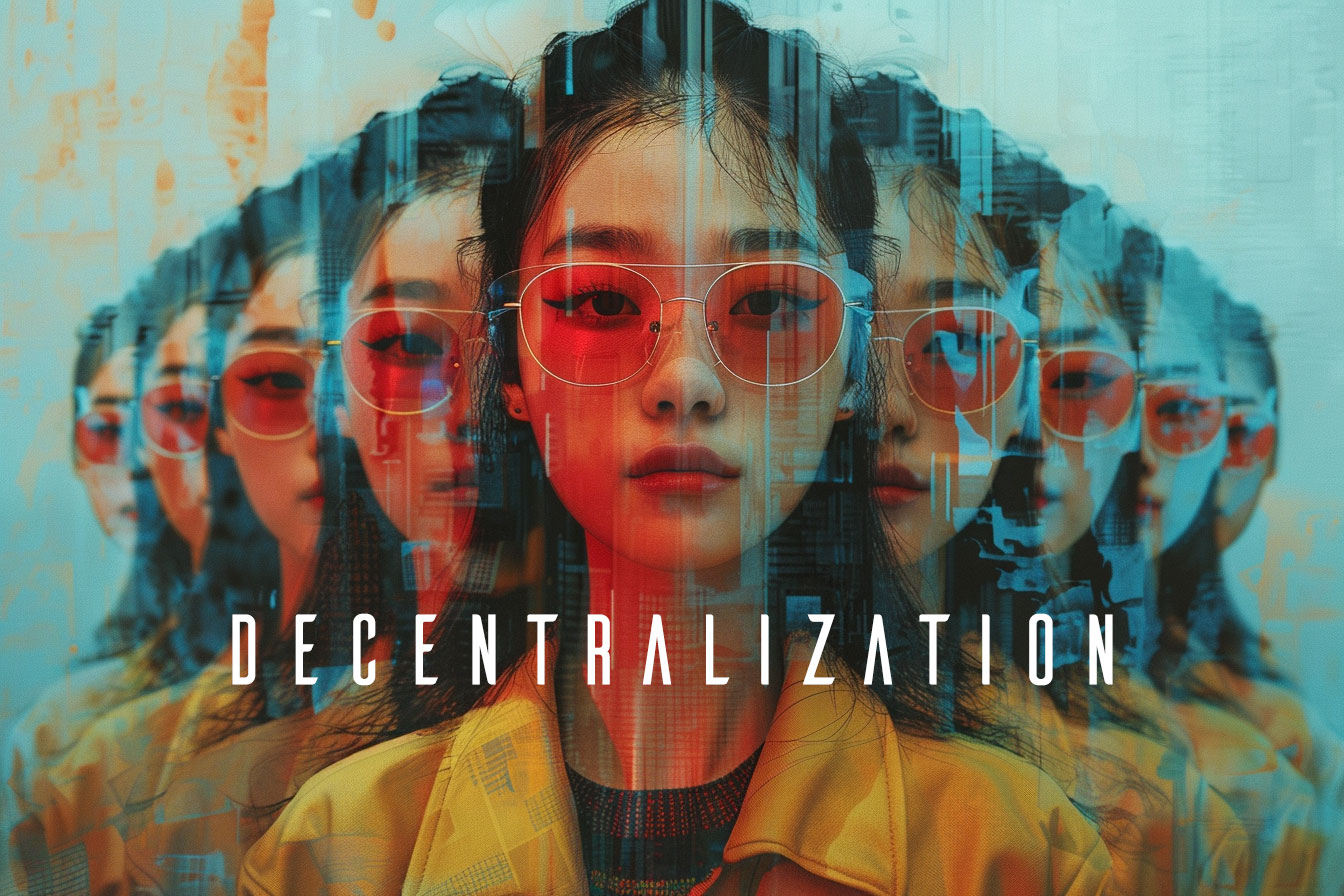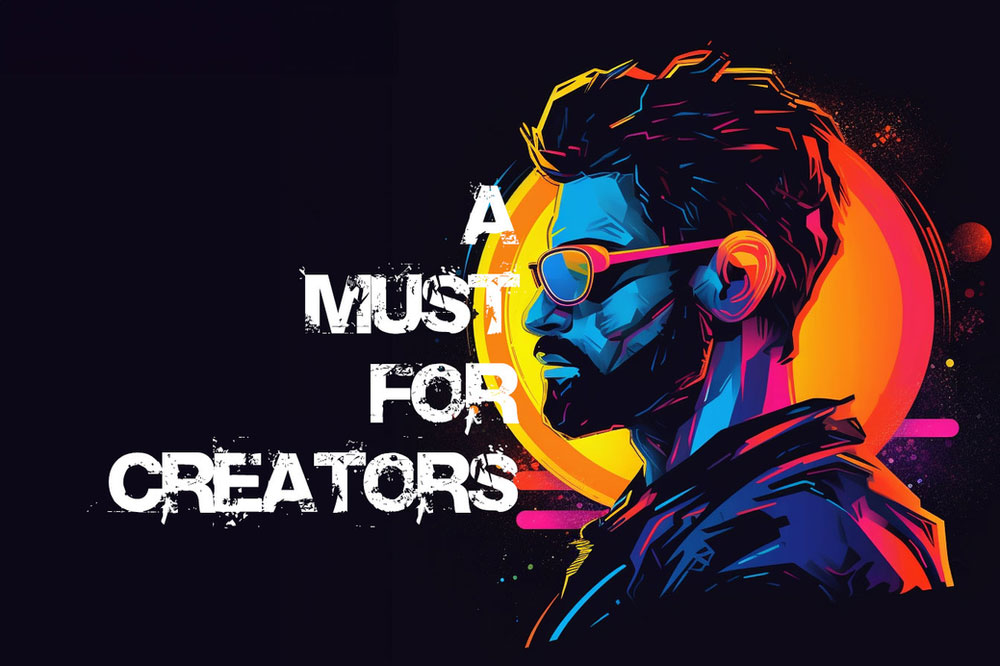
How Decentralization Can Help Build a Thriving Digital Economy Within Social Platforms
The rise of social media platforms has revolutionized the way we communicate and connect with others. However, these platforms have also brought to light several challenges and issues related to data privacy, censorship, and centralization of power. Decentralization offers a potential solution to these problems by distributing power and control among a network of users, rather than relying on a central authority.
In this post, we will explore the concept of decentralization and its potential for building a thriving digital economy within social platforms. We will discuss how decentralization addresses the issues and challenges facing centralized social platforms and examine real-world examples of decentralized social platforms in action. We will also delve into the opportunities and benefits of a decentralized digital economy, including micropayments, tokenization, and smart contracts.
As we move into the next chapter of the Creator Economy, it is important to consider the implications of centralization and the potential for decentralization to shape the future of social platforms and the economy. By the end of this post, readers will have a better understanding of the possibilities and potential of decentralization and how it can help build a more equitable and sustainable digital economy within social platforms.
Table of Contents
What is Decentralization?
Imagine a world where everything you do online is controlled by a single entity. A world where your data is stored on a central server, where your transactions are validated by a central authority, and where your choices are limited by a central algorithm. A world where you have no say in how your information is used, shared, or monetized. A world where you have no privacy, no freedom, and no power.
Sounds scary, right? Well, this is the world we live in today, at least to some extent. The internet, which was once a decentralized network of computers, has become increasingly centralized over the years, with a few tech giants dominating the internet. These companies have amassed enormous amounts of data, influence, and wealth, often at the expense of users’ rights and interests.
But what if there was a better way? A way to reclaim our digital sovereignty and autonomy? A way to distribute power, control, and decision-making from a central authority to a distributed network? A way to create a more transparent, secure, and democratic internet?
This is the vision of decentralization, a transformative concept that has gained significant momentum in the digital age. Decentralization is about empowering users and communities to participate in the creation and operation of digital and social platforms, rather than being passive consumers of centralized services. Decentralization is about leveraging technologies such as blockchain, peer-to-peer networks, and open-source software to achieve a more fair, inclusive, and innovative digital ecosystem.
At its essence, decentralization challenges the conventional notion of authority and control. Here’s what you need to know:
- Definition: Decentralization refers to the distribution of power, decision-making, and data across a network of participants rather than relying on a single central entity. It’s like a symphony where every instrument plays a crucial role, creating harmony without a dominant conductor.
- Contrast with Centralization: In centralized systems (think traditional corporations or top-down governance), power rests in the hands of a few. Decentralization flips the script, empowering individuals and fostering collaboration.

Are you a creator or photographer feeling confined by the control of major centralized social media platforms? Do you dream of a space where you can freely create, interact, and profit without the interference of big tech corporations? If yes, then you’re in the right place. I’m here to tell you about a promising alternative that’s been making waves in the creator economy – decentralized social media.
Historical Context
The Napster legacy.
One of the first and most famous examples of decentralization in action was Napster, a peer-to-peer file-sharing platform that launched in 1999. Napster allowed users to share and download music files directly from each other’s computers, bypassing the need for a central server. This method of file sharing challenged the traditional model of content distribution, where content was controlled by large corporations. Napster demonstrated the power of peer-to-peer networks to enable direct interactions between users, democratizing access to digital content. Although Napster was shut down due to legal issues, the concept of peer-to-peer file sharing continued to evolve and inspire subsequent decentralized platforms and applications.
Blockchain technology:
The emergence of Bitcoin. The introduction of Bitcoin in 2009 by Satoshi Nakamoto marked a watershed moment for decentralization. With its whitepaper, “Bitcoin: A Peer-to-Peer Electronic Cash System,” Nakamoto presented the first fully functional blockchain-based digital currency. This innovation was not just a new form of money; it was a radical new way to achieve consensus in a distributed network without relying on a central authority. Blockchain technology, the foundation of Bitcoin, is characterized by its transparent, tamper-proof ledger that records transactions across a network of computers. This design ensures that data is immutable and verifiable, eliminating the need for a central authority to validate transactions.
Blockchain technology also enables the creation of digital tokens, such as cryptocurrencies, that can be used as a medium of exchange, a store of value, or a representation of any asset or right. Blockchain technology has implications far beyond digital currencies, offering a new paradigm for secure, decentralized transactions and data management in various domains.
Decentralized applications:
The blockchain revolution. The blockchain revolution sparked by Bitcoin has inspired a plethora of decentralized applications (dApps), platforms, and technologies that leverage blockchain for various purposes. These include smart contracts, which are self-executing agreements that run on the blockchain; decentralized finance (DeFi), which is a movement to create open and transparent financial services that operate without intermediaries; and non-fungible tokens (NFTs), which are unique and scarce digital assets that can represent anything from art and music to collectibles and gaming items. These developments showcase the potential of blockchain to serve as a foundational technology for a new era of decentralization, challenging traditional centralized systems across a wide range of industries.
From Napster to blockchain, the journey towards decentralization has been driven by a collective desire for more equitable, secure, and user-centric digital platforms and services. As we continue to explore the potential of decentralization, the lessons learned from these historical milestones serve as valuable guides in navigating the challenges and opportunities that lie ahead in our quest for a more decentralized digital future.
- Peer-to-Peer Networks: Remember Napster? It was one of the earliest examples of decentralized file sharing. Users connected directly to each other, bypassing intermediaries.
- Blockchain Revolution: Enter blockchain—the game-changer. Satoshi Nakamoto’s Bitcoin whitepaper introduced a decentralized digital currency. Blockchain’s transparent, tamper-proof ledger laid the groundwork for a new era.
Core Principles
Decentralization isn’t a monolithic concept, it is based on a few core principles. These principles not only set decentralized systems apart from their centralized counterparts but also reflect the values of empowerment, resilience, and trust that decentralization seeks to promote. Let’s take a look at these key concepts.
Distributed architecture:
Decentralization relies on a distributed architecture, where operations are spread across multiple nodes, which can be computers, servers, or devices, forming a network. This design makes the system resilient, as there is no single point of control or failure. If one node goes down or gets attacked, the rest of the network keeps running, ensuring the system’s functionality and reliability. This architecture also enhances security and participation, as anyone with a compatible device can join the network and contribute to its operation.
Autonomy and trustlessness:
Decentralization embraces the principle of autonomy and the concept of trustlessness. In decentralized systems, users do not have to trust a central authority or intermediary to validate transactions or data. Instead, trust is built into the system through cryptographic methods and consensus algorithms, such as proof-of-work (PoW) or proof-of-stake (PoS). These algorithms enable the network to agree on the validity of transactions or data without the need for a third party. This shift from a trust-based model to a trustless system empowers users to transact and interact with confidence in the platform’s integrity.
Empowerment:
Decentralization aims to empower users and communities, offering an unprecedented level of control and ownership. In decentralized systems, users retain their data, identity, and interactions, rather than giving them up to centralized repositories or data silos. This paradigm shift challenges the traditional model of digital platforms, where users often surrender their personal information to centralized entities. By enabling users to own their data and manage their digital identities, decentralization enables a more private, secure, and user-centric digital experience. This empowerment also extends to the creation and governance of digital assets, allowing for innovative economic models and community-driven decision-making processes.
Interoperability and openness:
Decentralization values interoperability and openness, ensuring that decentralized systems are compatible and collaborative. Decentralized systems are designed to be open, with publicly available protocols and standards that encourage interoperability among different networks and applications. This openness fosters innovation and collaboration, as anyone can review, contribute to, or fork the code. This openness also ensures that decentralized applications (dApps) and services can work together seamlessly, providing users with a more integrated and versatile digital ecosystem.
These are the core principles of decentralization—distributed architecture, autonomy and trustlessness, empowerment, and interoperability—that collectively shape a new way of developing digital technologies. By following these principles, decentralized systems offer a robust alternative to traditional centralized models, promising a future that prioritizes security, privacy, and user sovereignty. As the landscape of decentralization continues to evolve, these foundational concepts will guide the development of technologies and platforms that aim to reshape the digital world in alignment with the values of openness, resilience, and user empowerment.
Decentralization and Its Potential for Social Platforms
Decentralization and Social Platforms The digital age has brought us unprecedented connectivity and communication channels, with social platforms like Facebook, Youtube and Twitter dominating the scene. However, these platforms are also highly centralized, raising serious concerns about privacy, data ownership, and censorship. Decentralization offers a promising alternative, aiming to address these issues through innovative technologies and models. This section explores the current state of social platforms, the rise of decentralized social networks, and the potential of tokenization and social tokens to empower creators and communities.
The Current World
Social platforms such as Facebook and Twitter have changed the way we connect, share, and communicate. But they also have a lot of power and control over our online experience. Centralization has led to a concentration of data, influence, and wealth in the hands of a few corporations, raising privacy concerns, issues around data ownership, and potential censorship. Users often have little control over their data, which can be used for advertising purposes without their consent. Moreover, the ability of these platforms to moderate or remove content has sparked debates about free speech and censorship, highlighting the need for a more fair and open digital space.
Decentralized Social Networks
In response to the challenges posed by centralized social platforms, a new wave of decentralized social networks has emerged. Platforms like Mastodon and DeSo offer alternatives that prioritize user control, privacy, and freedom of speech. These decentralized networks operate on a distributed architecture, where no single entity has control over all the data or the platform itself.
Mastodon:
An open-source, decentralized social network that functions similarly to Twitter but with a federated model. It consists of various independent servers (or “instances”) that communicate with each other, allowing users to interact across servers without being confined to a single corporate platform.
DeSo:
A new layer-1 blockchain built from the ground up to decentralize social media for billions of users. DeSo allows users to own their identity, profile, content, and social graph in a completely censorship-resistant way. DeSo also enables users to monetize their content and influence through new crypto-native tools, such as social tokens, social DAOs, social NFTs, and more.
Hyprr:
A social media and content delivery platform, with its own fully integrated NFT engine, making Hyprr a truly multilayered platform for content consumption and creation. Hyprr allows users to share photos, post videos, stream content, and discover NFTs. Hyprr also enables users to earn rewards for their content and influence through its native token, which can be used for tipping, staking, or accessing premium features.
These platforms highlight features like enhanced privacy, data sovereignty, and resistance to censorship. However, challenges remain, including achieving widespread adoption, ensuring a seamless user experience, and moderating content in a manner that balances freedom of expression with protection against harmful content.

Are you tired of the same old, same old in your social media feeds? Do you need a better social platform and wish for a platform that is not just innovative, but also prioritizes your needs as a user? Or, as a content creator, do you long for a platform that gives you the control…

Learn about the promising world of SocialFi projects, where creators merge social networking with DeFi to earn through content creation, NFT minting, and more.
Tokenization and Social Tokens
Decentralization intersects with another groundbreaking concept: tokenization and social tokens. This model leverages blockchain technology to create token-based economies within social platforms, enabling creators and communities to thrive in new and innovative ways.
Social tokens can represent ownership or membership in a community, granting holders access to exclusive content, voting rights, or a share in the community’s success. This model not only provides a new revenue stream for creators but also fosters a stronger sense of community and engagement among users.
For creators, social tokens open up possibilities for monetizing content directly through their communities, bypassing traditional advertising models and platform fees. For users, these tokens offer a way to support their favorite creators and participate in the governance of the platforms they use.
However, the integration of token economies into social platforms also presents challenges, including regulatory hurdles, ensuring fair and equitable distribution of tokens, and protecting users from potential scams.
The shift towards decentralization in social platforms represents a significant move towards a more transparent, secure, and user-centric digital economy. Decentralization offers a promising alternative to the centralized models that dominate the current social economy, empowering users and communities to take control of their online experience. As decentralization continues to evolve, the potential of decentralized social networks and social tokens to transform the digital economy becomes more evident.

Social media platforms have become an integral part of our daily lives. They allow us to connect with others, share content, and engage with the world around us. However, as the number of users and content being shared continues to grow, it can be difficult for individual users to stand out and get the visibility…
Economic and Operational Challenges of Decentralization
Decentralization faces significant economic and operational challenges, especially for new platforms that aim to build from the ground up. These challenges stem from one of the core principles of decentralization: the distribution of network operations across multiple nodes, typically operated by users or stakeholders of the platform. This principle, while essential for decentralization, also entails a lot of costs and complexities.
Operational power and cost:
Setting up and running nodes in a decentralized network requires a lot of resources, such as hardware, electricity, and digital assets. This can create a high barrier to entry for those who want to join as node operators, especially in the early stages of a platform’s development when resources are scarce. As a result, there’s a risk that only the wealthy few can afford to run nodes, leading to a concentration of power and control within the network. This contradicts the goal of decentralization, which is to distribute power and control among a diverse and decentralized network.
Funding and sustainability:
Finding the right balance between affordability and funding is a delicate task for new platforms. Without enough funding, it’s hard to incentivize users to run nodes, which are vital for the network’s security, performance, and decentralization. Traditional funding sources, such as venture capital, may not align with the values of decentralization, leading projects to look for alternative models, such as token sales, community funding, or donations. However, these models come with their own challenges, such as regulatory uncertainty, market volatility, and the need to create a sustainable economic model that rewards users while ensuring the platform’s longevity.
To overcome these challenges, decentralized projects are exploring various strategies, such as:
Layered scaling solutions:
Implementing technical solutions that reduce the cost and complexity of running nodes, making it easier for more users to join the network. These solutions can include layer-2 protocols, sidechains, sharding, or off-chain computation, which aim to improve the scalability and efficiency of the network.
Economic incentives:
Designing tokenomics and incentive mechanisms that fairly compensate node operators and users, encouraging a more diverse and decentralized network. These mechanisms can include rewards, fees, staking, or governance tokens, which aim to align the interests and behaviors of the network participants.
Community governance:
Leveraging decentralized governance models to ensure that decision-making power is distributed among a wide range of stakeholders, not just those with the most resources. These models can include voting, delegation, or DAOs, which aim to enable collective and democratic decision-making within the network.
Addressing the economic and operational challenges of decentralization is crucial for ensuring that decentralized platforms can achieve their vision of creating more open, fair, and resilient systems. While the road ahead is complex, the ongoing innovation and experimentation within the decentralized space offer hope for overcoming these obstacles, paving the way for a more decentralized future.
Conclusion
Decentralization is a transformative concept that aims to create more open, fair, and resilient digital systems and networks. By distributing power, control, and decision-making from a central authority to a distributed network, decentralization offers a promising alternative to the centralized models that dominate the internet. Decentralization leverages technologies such as blockchain, peer-to-peer networks, and open-source software to achieve transparency, security, and autonomy.
One of the domains where decentralization has the potential to make a significant impact is social media platforms. Social media platforms such as Facebook and Twitter have revolutionized the way we connect, share, and communicate, but they also raise serious concerns about privacy, data ownership, and censorship. Decentralized social networks, such as Mastodon and DeSo, offer alternatives that prioritize user control, privacy, and freedom of speech. These networks operate on a distributed architecture, where no single entity has control over all the data or the platform itself. They also enable users to monetize their content and influence through tokenization and social tokens, creating new economic models and empowering creators and communities.
Another aspect of decentralization that is important for its success is interoperability and openness. Decentralized systems are designed to be open, with publicly available protocols and standards that encourage interoperability among different networks and applications. This openness fosters innovation and collaboration, as anyone can review, contribute to, or fork the code. It also ensures that decentralized applications and services can work together seamlessly, providing users with a more integrated and versatile digital ecosystem.
Decentralization is not just a technical term, but a social and political movement, that challenges the status quo and creates a more equitable and sustainable future for everyone. As the landscape of decentralization continues to evolve, the potential of decentralized systems and networks to transform the digital world becomes more evident.
For more on Building a Better Social Platform, read my blog on

Are you tired of the same old, same old in your social media feeds? Do you need a better social platform and wish for a platform that is not just innovative, but also prioritizes your needs as a user? Or, as a content creator, do you long for a platform that gives you the control…
Other related topics on creating a better digital economy below:
- Navigating the Complexities of Censorship and Botting on Decentralized Social Platforms
- Algorithmic Bias and Social Currency: Can We Achieve Fair Visibility on Social Media?
- The role of Nodes in blockchains in achieving decentralization and addressing censorship concerns
- Making Censorship Fun: Gamifying Image Moderation with AI
- From Stolen Art to Royalties: How Tokenizing AI Data Can Protect Artists’ Rights
Be a voice that matters –
I invite you to join me and become part of the awesome community working together to create a platform that’s not just fun, but also lucrative. We need your input, your creativity, and your willingness to take a stand against censorship and botting on decentralized social platforms.

So, come on over to our Discord server, and let’s make some magic together!








Leave a Reply